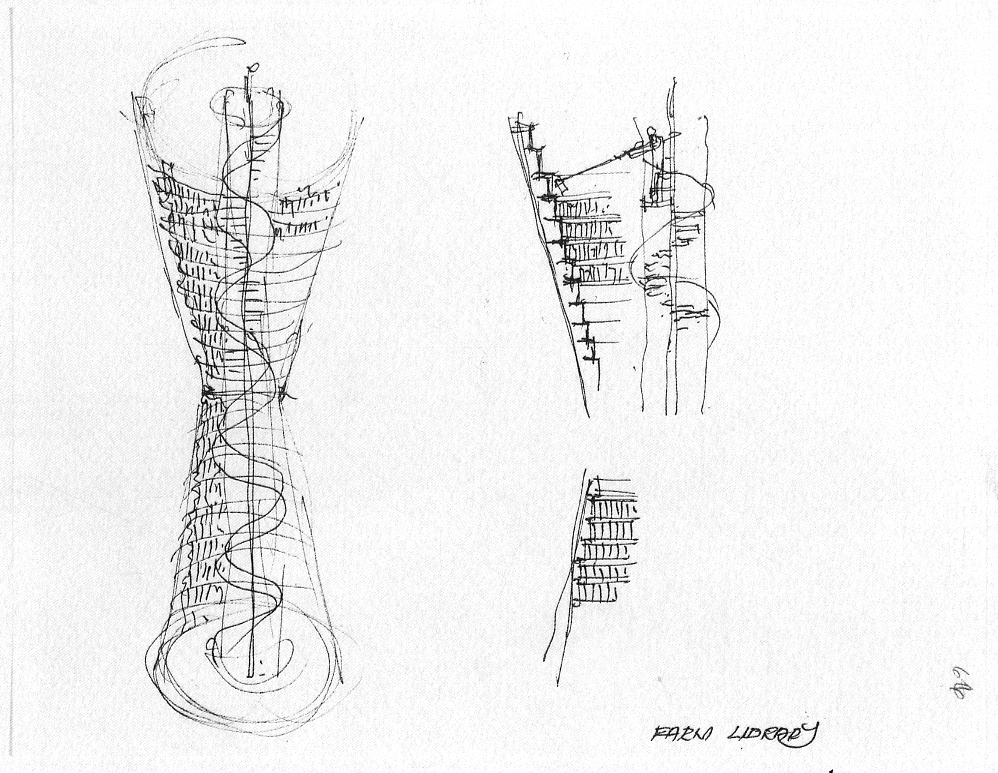Why

I find that understanding what influences someone can help to understand their intentions at a deeper level. Also, it helps me to understand my intentions at a deeper level.
It is not a coincidence that all of the individuals listed below are writers. I believe in the transformative capacity of space that you can enter, space that encloses. I also believe in the transformative capacity of the thought space enabled through text. To write a book is to allow an outsider into a part of your mind, a part you believe is worth sharing. To read a book is have a piece of someone else, to own it and hold it in your hands. My interest in libraries is a synthesis of these passions. Not separately, I find the process of turning literary space into architectural space a rich source of imagination.
To write, to build, to paint, to speak are all different methods of communicating meaning; ultimately I am inspired by the ‘what’ as much as the ‘how.’
It is not a coincidence that all of the individuals listed below are writers. I believe in the transformative capacity of space that you can enter, space that encloses. I also believe in the transformative capacity of the thought space enabled through text. To write a book is to allow an outsider into a part of your mind, a part you believe is worth sharing. To read a book is have a piece of someone else, to own it and hold it in your hands. My interest in libraries is a synthesis of these passions. Not separately, I find the process of turning literary space into architectural space a rich source of imagination.
To write, to build, to paint, to speak are all different methods of communicating meaning; ultimately I am inspired by the ‘what’ as much as the ‘how.’
Who

The Farm Library, Lancaster Masques, John Hejduk
Thomas Hobbes, for Leviathan.
The magnitude of Hobbes’ mental stamina is nearly unbounded.
Plato, for the Socratic Dialogues.
Plato’s ambition to constantly ask “for the sake of what” leads him to a depth we often forget matters, and we often to forget to search for.
Gaston Bachelard, for The Poetics of Space.
Bachelard’s willingness to look with the critical eye of a philosopher at such ephemeral topics is a true outlier. His observations signify, and therefore allow us to discuss what was a mist in the air, without taking away its beauty.
Jorge Luis Borges, for "The Aleph."
Borges shows us how text that is finite and sequential can create a space that is not, that is infinite and simultaneous. He reminds us of the complex and intangible world that structures of understanding mask.
John Hejduk, for Victims.
Hejduk reminds us that raw artistic expression has value in and of itself. He does not write his deepest meaning, but, like/as an architect, crafts a world that surrounds it.
John Hejduk, for "The Sleep of Adam."
The emotive power is astounding. I have reproduced it here.
Italo Calvino, for Invisible Cities.
Calvino gives us a lifetime of different perspectives that each, in their own way, remind us how strange the world is. They make the world feel lighter.
Alain de Botton, for The Architecture of Happiness.
He asks potentially what architecture can do for us, and then what it ought to.
The magnitude of Hobbes’ mental stamina is nearly unbounded.
Plato, for the Socratic Dialogues.
Plato’s ambition to constantly ask “for the sake of what” leads him to a depth we often forget matters, and we often to forget to search for.
Gaston Bachelard, for The Poetics of Space.
Bachelard’s willingness to look with the critical eye of a philosopher at such ephemeral topics is a true outlier. His observations signify, and therefore allow us to discuss what was a mist in the air, without taking away its beauty.
Jorge Luis Borges, for "The Aleph."
Borges shows us how text that is finite and sequential can create a space that is not, that is infinite and simultaneous. He reminds us of the complex and intangible world that structures of understanding mask.
John Hejduk, for Victims.
Hejduk reminds us that raw artistic expression has value in and of itself. He does not write his deepest meaning, but, like/as an architect, crafts a world that surrounds it.
John Hejduk, for "The Sleep of Adam."
The emotive power is astounding. I have reproduced it here.
Italo Calvino, for Invisible Cities.
Calvino gives us a lifetime of different perspectives that each, in their own way, remind us how strange the world is. They make the world feel lighter.
Alain de Botton, for The Architecture of Happiness.
He asks potentially what architecture can do for us, and then what it ought to.
